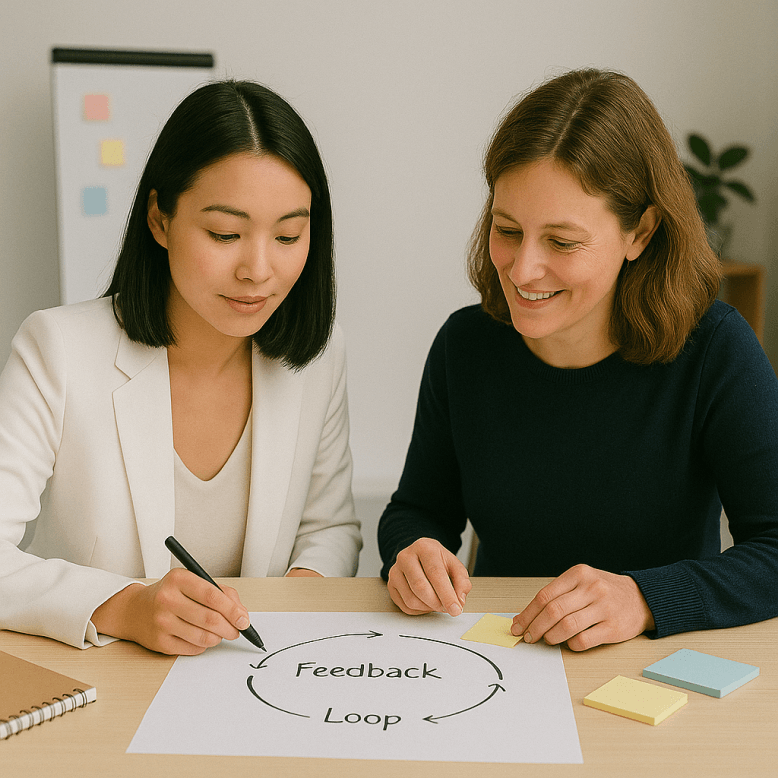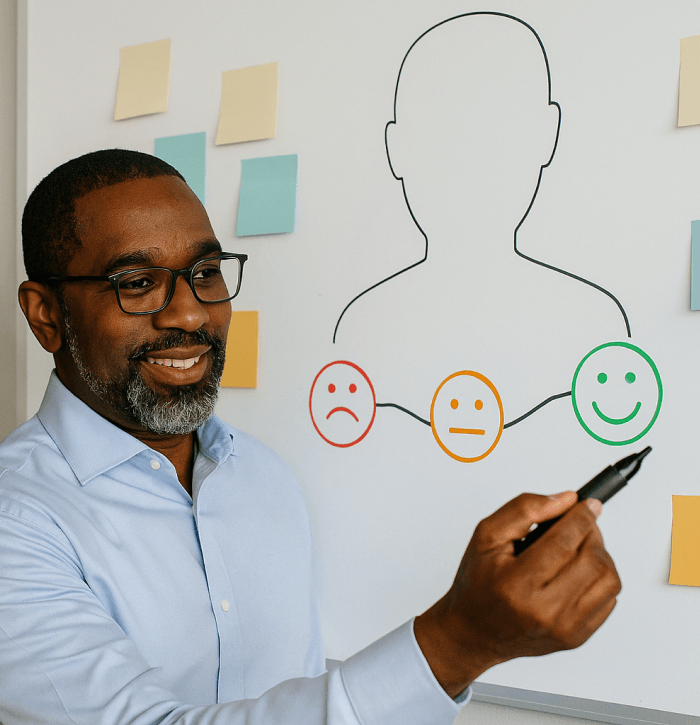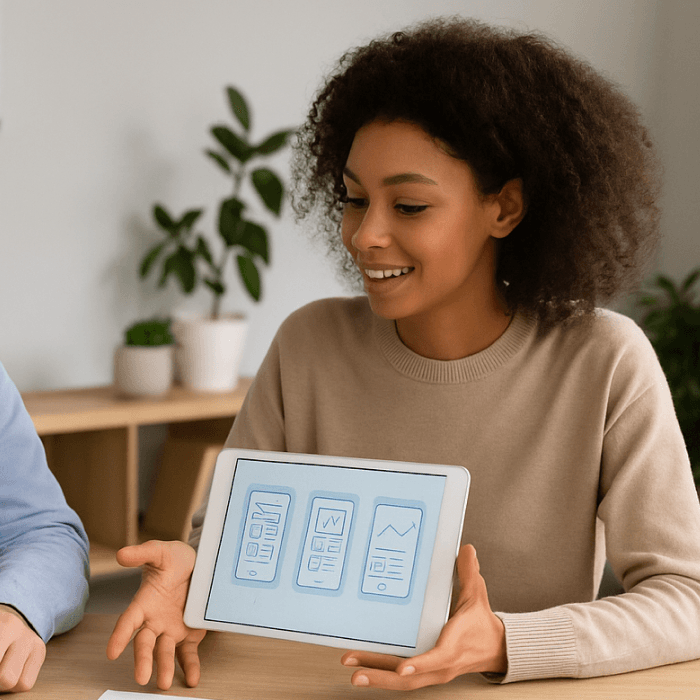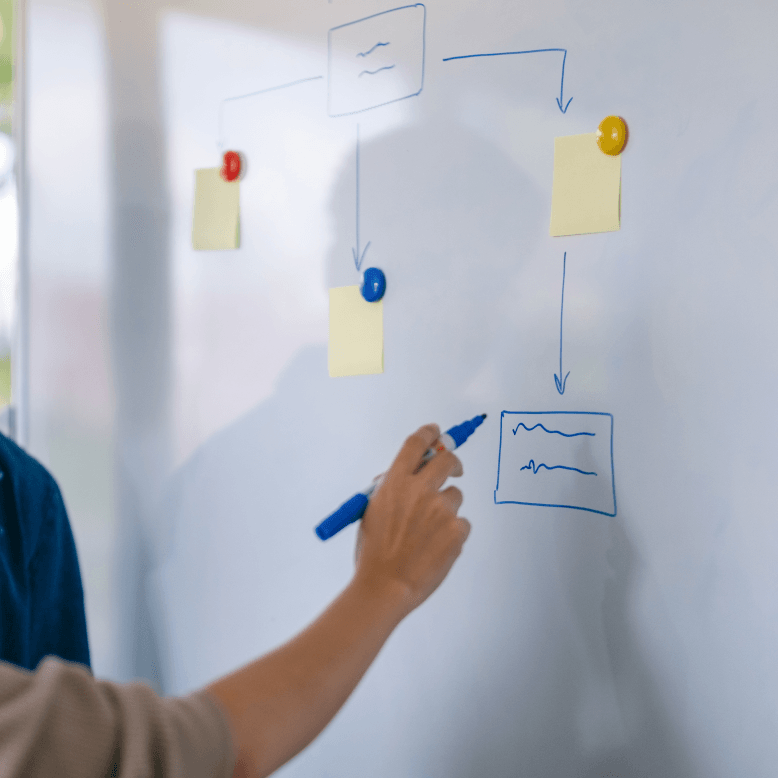Updated: September 23, 2024- 16 min read
A good designer is able to project themselves into the future and come back with insights that guide their work.
— Robert Brunner, Chief Designer at Beats by Dr. Dre, on The Product Podcast
You know that feeling when you open a new app and everything just works. It feels like it was designed with you in mind.
If you’re here, you probably know it happened by design — pun intended. Product designers stand proud behind this ‘memorable design’. Product design is a noteworthy career. As you know, it isn’t just about creating polished screens or sleek interfaces; it’s about making decisions that shape the way people interact with technology. It’s not just about aesthetics or knowledge of the ‘principles of beauty’ but about empathy, strategy, and a deep understanding of user needs.
So, what does it really take to step into this role and thrive?
We’re diving into the day-to-day responsibilities, the essential skills, and the must-have tools of the trade. We’ll explore how product designers differ from UX designers and product managers, giving you the full picture. By the end of this, you’ll know exactly what you’re signing up for—and whether it's the right path for you.
Design Sprint Template
Use design thinking to solve design problems and reduce production risks.
GET THE TEMPLATE
What Is a Product Designer?
A product designer is essentially the mastermind behind how a product looks, feels, and works.
They’re not just focused on making something visually appealing—they’re responsible for the entire experience — from the first interaction to the last. It's a role that sits at the intersection of design, user (UX) or product experience (PX), and Product Strategy. Product designers have to understand user needs, company goals, and technical constraints to create products that not only look great but also solve real problems.
The methodology that brought this role into the spotlight is Design Thinking. This approach focuses on understanding the user, challenging assumptions, and redefining problems to identify alternative strategies and solutions. It was popularized in the early 2000s by IDEO, a design firm, and the Stanford d.school as per IDEO. Empathy, ideation, and iteration — the three staples that define both Design Thinking as well as the Product Designer’s role.
Before the term "product designer" became mainstream, there were roles like graphic designer, UX designer, and interaction designer. But these titles often had narrow scopes—either focused on visuals, user interfaces, or specific aspects of the user experience.

In their day-to-day work, product designers engage in various tasks. They start with User Research to understand pain points and needs, then move into ideation—brainstorming and sketching out potential solutions. Wireframing and prototyping follow, where they bring these ideas to life in a tangible form.
Throughout this process, they’re constantly iterating based on user feedback, refining the design until it meets both user needs and business goals. They often collaborate with engineers, product managers, and other stakeholders to ensure the final product is not just a pretty face but a well-rounded solution.
What Do Product Designers Do?

The product designer role is multifaceted. It requires a blend of creativity, technical skills, and strategic thinking. Here's a detailed breakdown of their core responsibilities:
User Research: Understanding the target audience is crucial. Product designers conduct interviews, surveys, and UX research to gather insights into user needs, behaviors, and pain points. This research helps inform design decisions and ensures the product aligns with real-world user expectations.
Ideation and Concept Development: What does a product designer do after understanding user needs? They brainstorm and generate ideas for solutions. This phase involves sketching concepts, creating mind maps, and collaborating with cross-functional teams to explore various approaches. The goal is to find innovative ways to solve user problems while meeting KPIs and OKRs.
Wireframing and Prototyping: Once ideas are formed, the product designer role moves to wireframing and prototyping. Wireframes are simple, low-fidelity layouts that outline the basic structure of a product. Prototypes are interactive models that simulate the user experience. These tools help visualize the user flow and functionality before moving to detailed design.
Visual Design: Product Designers are responsible for the visual aesthetics of the product. This includes selecting color schemes, typography, iconography, and other visual elements that define the product's look and feel. They create high-fidelity mockups to represent the final design, ensuring it’s both visually appealing and consistent with the brand identity.
Interaction Design: Part of the product designer role is defining how users interact with the product. They focus on creating intuitive navigation, smooth transitions, and engaging micro-interactions to enhance the overall user experience. This involves considering how users will move through the product and making sure every interaction is seamless.
User Research: What does a product designer do to ensure their design is effective? They conduct usability testing. This involves observing real users as they interact with the product to identify any issues or areas for improvement. Feedback gathered during this stage is crucial for refining the design before final implementation.
Collaboration with Cross-Functional Teams: Product designers work closely with product managers, engineers, marketers, and other stakeholders. They ensure that the design aligns with the product's technical capabilities and business goals. Effective communication and collaboration are key to translating design concepts into a functional product.
Iteration and Refinement: The product designer role doesn't end after the first design draft. They continuously iterate on the design based on feedback, data analysis, and changing user needs. This iterative process ensures that the product evolves and improves over time, staying relevant to users and the market.
Design System and Documentation: Product designers often contribute to or create a design system—a set of guidelines and reusable components that maintain consistency across the product. They document design decisions, patterns, and specifications to guide future development and ensure a cohesive product experience.
Product Launch and Post-Launch Analysis: After a product goes live, product designers monitor its performance. They analyze user feedback, usage data, and key metrics to identify successes and areas needing further refinement. This post-launch phase is vital for understanding the product's impact and planning future enhancements.
In short, the product designer role is about crafting a product that not only looks great but is also functional, intuitive, and aligned with user needs and business goals. From initial concept to post-launch evaluation, product designers are the driving force behind creating user-centric products.
Common Skills and Requirements for Product Designers in Job Postings:
User-Centric Design: Ability to design with a focus on the end-user's needs and experiences.
Prototyping Tools: Proficiency with tools like Sketch, Figma, Adobe XD, or InVision for creating prototypes and wireframes.
Visual Design Skills: Strong sense of layout, color theory, typography, and visual hierarchy.
Interaction Design: Experience designing interactive elements and ensuring seamless user flow.
Usability Testing: Ability to conduct and analyze usability tests to refine product design.
Collaboration Skills: Comfortable working with cross-functional teams including engineers, product managers, and marketers.
User Research: Skilled in gathering and analyzing user feedback through interviews, surveys, and other research methods.
Adaptability: Ability to iterate designs based on feedback and changing requirements.
Technical Knowledge: Understanding of front-end technologies like HTML, CSS, and JavaScript.
Problem-Solving: Strong analytical skills to identify and solve design-related challenges.
Communication Skills: Ability to clearly present design ideas and rationale to stakeholders.
Attention to Detail: Meticulous about the finer points of design, ensuring a polished final product.
Portfolio: A strong portfolio showcasing relevant design work and processes.
Project Management: Ability to manage multiple design projects and meet deadlines efficiently.
Tools Product Designers Use Most Often
SketchUsed for creating wireframes, mockups, and prototypes. It offers an intuitive interface and a wide range of plugins, making it easy to iterate designs quickly and maintain design consistency.
Figma 🏆 Proddy Award WinnerA cloud-based design tool for collaboration, wireframing, and prototyping. It allows multiple team members to work on a design simultaneously, streamlining feedback and ensuring everyone stays on the same page.
Adobe XDUsed for designing and prototyping user experiences. Its integration with other Adobe products makes it a versatile choice for creating high-fidelity designs and interactive prototypes.
InVisionPrimarily used for prototyping and gathering feedback. It allows designers to create interactive prototypes that can be shared with stakeholders, facilitating better communication and faster iterations.
Miro 🏆 Proddy Award WinnerAn online whiteboard tool for brainstorming, ideation, and collaboration. It's used for mapping out user flows, creating mood boards, and conducting design sprints, enhancing the collaborative aspect of the design process.
Axure RP 🏆 Proddy Award WinnerUsed for creating complex, highly interactive prototypes. It helps in showcasing the detailed interactions and behaviors of a product, which is crucial for complex projects requiring clear user flow demonstrations.
ZeplinUsed to hand off designs to developers. It bridges the gap between design and development by providing detailed specs, assets, and CSS code, ensuring the design is implemented accurately.
Marvel 🏆 Proddy Award WinnerA design and prototyping tool that’s great for creating quick, interactive prototypes. It also allows for user testing and feedback collection, helping designers validate their concepts early on.
AbstractA version control system for Sketch files. It allows designers to collaborate, track changes, and manage different versions of a design project, ensuring a smooth design workflow.
PrincipleA tool for designing animated and interactive user interfaces. It helps designers create motion and interaction designs, bringing static designs to life and illustrating how a user will interact with the product.
UserTesting 🏆 Proddy Award WinnerA platform for gathering user feedback on prototypes and designs. It helps designers understand how real users interact with their designs, allowing them to make data-driven improvements.
Mural 🏆 Proddy Award WinnerSimilar to Miro, it’s used for virtual brainstorming and collaboration. Product designers use it to create mind maps, affinity diagrams, and journey maps to explore different aspects of the user experience.
Notion 🏆 Proddy Award WinnerAn all-in-one workspace for notes, documentation, and project management. Designers use it to organize their work, collaborate with teams, and keep track of project progress, improving overall productivity.
Balsamiq 🏆 Proddy Award WinnerA tool for creating low-fidelity wireframes. It's used for sketching out rough ideas quickly, focusing on layout and structure rather than detailed design, which helps in the early stages of product development.
Hotjar Used for user behavior analytics. It provides heatmaps, session recordings, and user feedback, helping designers understand how users interact with their product and identify areas for improvement.
Each of these tools plays a specific role in the product designer's workflow, from initial ideation to final implementation, ensuring the design process is efficient, collaborative, and user-focused.
Product Designer Salary in the United States
The average annual salary for a product designer in the United States is around $119,578, according to Indeed. This breaks down to approximately $9,965 per month.
Entry-level positions typically start at around $69,645 per year, while experienced professionals can earn up to $205,312 or more annually.
Highest Paying Cities:
Menlo Park, CA: $195,468/year
San Francisco, CA: $167,981/year
Mountain View, CA: $147,591/year
Cities like Livonia, Dearborn, and Seattle also offer competitive salaries, ranging from $132,000 to $142,000. Entry-level product designers can expect to start at about $53,063 annually, with senior roles reaching averages of $160,851 per year.
How to Become a Product Designer in 10 Steps?
To understand design, you need to get beyond the basic schedule and really understand what happens at each phase—research, concept development, and how design is maintained through engineering. It's about building bridges between different cultures and organizations.
— Robert Brunner, Chief Designer at Beats by Dr. Dre, on The Product Podcast
1. Build a Strong Foundation in Design Principles
Becoming a Product Designer starts by learning the basics of design—things like color theory, typography, layout, and visual hierarchy. These principles form the backbone of every good design.
Just like in Product Management, you don’t necessarily need a formal degree in design. Some background in fields like graphic design, industrial design, or even architecture can be beneficial. If you're starting from scratch, online courses, books, and tutorials can be your best friends. Focus on building a solid understanding of what makes a design not just pretty, but functional and user-friendly.
2. Learn Key Design Tools
Product designers use a variety of design tools daily. Familiarize yourself with industry-standard software. You can start with Sketch, Figma, Adobe XD, and InVision. In the beginning, start with one tool and practice by designing mockups or wireframes for apps and websites.
Since you’re new to the craft, you can get a competitive edge over your peers by learning state-of-art AI tools. These AI tools are used extensively and at a growing rate across various industries.
The more comfortable you become with these tools, the more efficiently you can bring your ideas to life. Many of these platforms offer free tutorials and community resources, so dive in and start experimenting. The goal is to not just know how to use these tools but to understand when and why they are employed.
3. Develop an Understanding of User Experience (UX) Design
Product design is heavily focused on creating an exceptional Product Experience. This means that product design education requirements are focused on user psychology, user journey and user flows, and how people interact with products.
Dive into UX principles like usability, accessibility, and user research methods. Take time to learn about product personas, journey mapping, and usability testing. You can find courses on UX design specifically, which will guide you through the process of researching user needs and translating those insights into design decisions.
Remember, a product designer's job is to solve problems for users, so empathy and user-centered thinking are key.
4. Build a Portfolio with Real Projects
To land a product design job, you'll need a portfolio that showcases your skills and design process.
Start by taking on small projects, even if they’re self-initiated or for non-profit organizations. You can redesign existing products, create new ones from scratch, or even participate in design challenges on platforms like Dribbble or Behance.
Each project in your portfolio should tell a story—show your process from initial research and sketches to the final design. Highlight how you approached user problems and how your design solutions addressed those issues.
5. Learn Basic Front-End Development
While not always a strict requirement, understanding the basics of front-end development (HTML, CSS, JavaScript) can set you apart. This knowledge allows you to communicate more effectively with developers, understand technical constraints, and design solutions that are feasible to implement.
You don't need to become a full-fledged coder. Still knowing how your designs will be built helps you create more realistic and practical designs. There are plenty of free resources online to get started, so even a basic understanding can make a big difference.
6. Master Collaboration and Communication Skills
The product designer career requires working closely with product managers, developers, and other stakeholders. Being able to communicate your ideas, design rationale, and how your designs align with business goals is crucial.
Practice presenting your work, explaining your design choices, and being open to feedback.
The best product designers know how to balance user needs with business objectives, and that often requires strong collaboration skills. Getting comfortable with tools like Slack, Notion, and Miro can also enhance how you collaborate with your team.
7. Stay Updated and Keep Learning
Product design is a constantly evolving field. New frameworks, tools, trends, and methodologies emerge regularly. Stay updated by reading design blogs, attending webinars, and participating in design communities.
Follow thought leaders on platforms like LinkedIn and Twitter to gain insights into the latest industry trends.
Consider joining design meetups or online forums to connect with other designers, exchange ideas, and get feedback on your work. Continuous learning is key—whether it’s picking up a new design tool, exploring a new design trend, or understanding a new research method.
8. Apply for Internships or Entry-Level Positions
Getting real-world experience is crucial —this is how to get into product design. Look for internships, freelance gigs, or junior product designer roles to get your foot in the door.
These positions provide hands-on experience and exposure to the day-to-day responsibilities of a product designer. They also offer the chance to work within a team, learn from more experienced designers, and understand how product design fits into the larger product development process. Even if it’s a short-term gig, the experience you gain will be invaluable.
9. Seek Feedback and Iterate on Your Work
Feedback is essential to growth as a product designer. Share your work with peers, mentors, or design communities, and stay open to constructive criticism.
Use this feedback to refine your designs and improve your approach.
The ability to iterate based on feedback is a key part of the design process—it's how you learn and grow. Don’t get too attached to your first draft; the best designs often come after multiple rounds of iteration. Get comfortable with this fact.
Product Designer vs. UX Designer
While both roles focus on creating user-centric products, the key difference lies in their scope. A UX Designer primarily focuses on the user's experience—conducting research, wireframing, and usability testing to ensure the product is intuitive and accessible.
In contrast, the Product Designer takes a broader view, encompassing UX, visual design, and business strategy. They’re involved from concept to final implementation, considering not just how the product feels but also how it aligns with the overall business goals.
Product Designer vs. Product Manager
The Product Manager acts as the strategic driver of the product, defining the vision, roadmap, and business objectives. They prioritize features and coordinate cross-functional teams to bring the product to market.
Meanwhile, the Product Designer is the creative force. They translate the product vision into tangible, user-friendly designs. Product Managers focus on the "why" and "what," while Product Designers dive into the "how" of the product's creation.
Go Get a Product Designer Role in Tech!
You've got the skills, the tools, and the know-how? Put it all to work even if you’re still considering yourself not nearly as skilled as you should be.
The tech industry is a playground for product designers, not a final destination you just dream about.
And here's the kicker: it's a field where every pixel and prototype you create can make a tangible impact. So, go ahead—sketch out your career path, prototype your journey, and iterate until you land that role. After all, the world needs more designers who can turn ideas into interfaces and problems into products. It's time to design your future.
User Flow Template
Include design early in the Product process with these two user flow diagram templates.
Get the template
Updated: September 23, 2024





